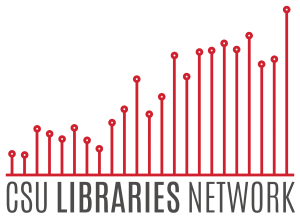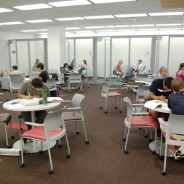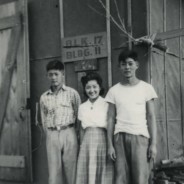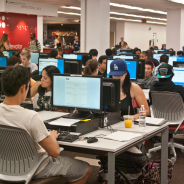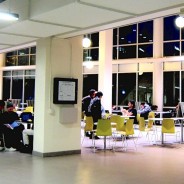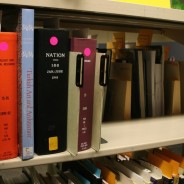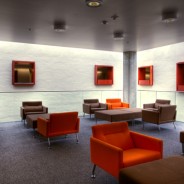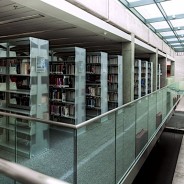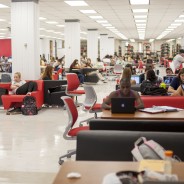David Walker receives 2015 LITA/Library Hi Tech Award
From American Library Association
For Immediate Release
Tue, 03/17/2015
Contact:
Mary Taylor
Executive Director, Library and Information Technology Association (LITA)
312-280-4267 or mtaylor@ala.org
CHICAGO — David Walker has been named the winner of the 2015 LITA/Library Hi Tech Award for Outstanding Communication in Library and Information Technology.
Emerald Group Publishing and the Library and Information Technology Association (LITA) sponsor the award that recognizes outstanding individuals or institutions for their long-term contributions in the area of Library and Information Science technology and its application.
Walker is being recognized for his dedication and commitment in developing the open source library portal application Xerxes over the past decade. Originally designed as an improved interface to the Ex Libris Metalib federated search system in 2004, Xerxes now supports a variety of back-end search engines, including commercial library discovery systems, such as Primo, EDS, Summon, non-cost web service (EBSCO Integration Toolkit, Worldcat API) and other search engines (Solr, Google Appliance). Through this effort, Walker has worked with a variety of vendors to develop and test their application programming interfaces and has been recognized by OCLC and Ex Libris for innovative uses of their services. In 2007 Walker released the system under an open source license, and today, Xerxes platform is implemented by over 40 institutions around the globe, with some also contributing code back to the project.
Walker said, “These days, academic libraries are increasingly opting for hosted discovery systems and library services platforms. It’s still vitally important that libraries retain responsibility for the interfaces we present users, and explore new and creative ways to integrate library content and services into learning management systems and other online spaces, which cannot be easily achieved by vendor discovery systems or services platforms. Xerxes continues to provide a flexible and open source platform to explore such projects, regardless of the underlying discovery system or library services platform.”
Currently, Walker serves as director of systemwide digital library services at the California State University (CSU), Office of the Chancellor. In this capacity, he oversees a systemwide discovery system, link resolver and institutional repository service for all 23 CSU campuses. His recent work has focused on moving the CSU libraries from a disparate and disconnected set of local ILS and ERM systems toward a consortium library services platform, as well as exploring integration of library systems and services with learning management systems.
Walker received his MLIS from UCLA. As a librarian, programmer and interface designer, he has led and contributed to a number of open source initiatives in the library community, including developing scripts, plugins, and interface designs for the SFX link resolver, Innovative ILS systems and other library services.
The Library and Information Technology Association and Emerald, the publisher of Library Hi Tech, are pleased to present the 2015 LITA/Library Hi Tech Award to David Walker for his outstanding contributions to communication in library science and technology. The award will be presented during Sunday Afternoon with LITA on June 28, 2015, at the ALA Annual Conference in San Francisco.
About LITA
Established in 1966, LITA is the leading organization reaching out across types of libraries to provide education and services for a broad membership including systems librarians, library administrators, library technologists, library schools, vendors and many others interested in leading edge technology and applications for librarians and information providers. For more information about LITA go to www.lita.org, or contact the LITA office by phone, 800-545-2433, ext. 4268; or e-mail: lita@ala.org
About Emerald
Emerald is a global publisher linking research and practice to the benefit of society. The company manages a portfolio of more than 290 journals and over 2,500 books and book series volumes. It also provides an extensive range of value-added products, resources and services to support its customers’ needs. Emerald is COUNTER 4 compliant. Emerald is also a partner of the Committee on Publication Ethics (COPE) and works with Portico and the LOCKSS initiative for digital archive preservation. It also works in close collaboration with a number of organizations and associations worldwide.
Embracing ‘Affordable Learning Solutions’ to promote equity
As tuition increases for college students, so does the need to control other costs.
That’s why libraries are making affordable textbook alternatives available to students through the CSU’s Affordable Learning Solutions program. Leslie Kennedy, director of Affordable Learning Solutions, or AL$, works with campuses in the California State University system to create cost-effective options for students.
“What we’re trying to do in the CSU is help faculty discover and hopefully adopt low- or no-cost materials,” Kennedy said. “And from the student perspective, we’re trying to support student success.”
AL$ promotes cost-effective alternatives, such as e-books, book rentals, course reserves from libraries and free open textbooks. The program aims to familiarize faculty with the available options and encourages them to choose resources that save their students money.
High textbook prices can get in the way of student success when students opt not to take certain courses because they can’t buy the text. Or they take courses but don’t buy the textbook.
“Students don’t buy the book, but take the course anyway and will accept a lower grade as a result, and then there are those who don’t even pass,” Kennedy said.
One study by the U.S. Public Interest Research Group found that 65 percent of students have decided not to buy a required book because of the price, and a single book can cost more than $200 depending on the course.
CSU libraries play an important role in saving students money. The Chancellor’s Office offers $20,000 grants to campuses proposing their own AL$ initiatives, and often, the libraries spearhead the effort to offer more affordable materials to students.
“For the most part, the CSU’s libraries have stepped up and taken the lead,” Kennedy said.
A hub for affordability at Pomona
One of the first universities to partner with AL$ was Cal Poly, Pomona. Their Affordable Learning Initiative (ALI) started in summer 2011 and has been growing ever since, said Emma Gibson, head of library public services.
A website about ALI offers resources for faculty and students, and serves as a hub for outreach.
“It gathers together a lot of resources like MERLOT (thousands of free, open textbooks); it links to a lot of the library resources; it links to sources where you can actually go and look for free e-texts,” Gibson said.
The library also provides services on Blackboard, the university’s learning management system where students access library databases based on their major and the courses they’re taking. Faculty can also work with the library to post course-specific resources on Blackboard.
“We’ve provided links to articles from our databases and we can also provide them links to our e-books from our e-book collection,” Gibson said.
But the librarians are perhaps the most important resource in ALI. Pomona’s librarians are encouraged to remind faculty about the program’s different services, and assist instructors in finding suitable course materials.
One such faculty member recently came to Gibson asking for her help in finding an affordable textbook for a new Spanish course. Gibson found several resources in the library’s collection, and even more texts through MERLOT, all of which she sent to him, she said.
Now, she’s waiting to see what book he chooses for his students.
“Contact us and we’ll do the searching for you to try to locate materials, an assortment of materials so that you can make the final decision,” Gibson said.
Bookstore and library collaborate at San Jose State
Started in spring 2012, San Jose State University’s Affordable Learning Solutions program partners the library with the bookstore to save students money. Each semester, the bookstore sends a list of textbooks ordered by faculty to the library, where that list is cross-referenced with all of the e-books in the library’s collection. The library then comes up with a list of more than 150 e-books available to students if they would prefer not to purchase a textbook.
“It’s gotten increasingly popular,” said Ann Agee, one of the coordinators of the program. “Back in spring 2012, we had 1,758 students using them. In fall of 2013, this last year, 5,000 students.”
That can mean as much as $130,000 in savings from e-book alternatives in one semester alone, Agee said.
The library also coordinates the Textbook Alternatives Project, which offers grants to encourage faculty to switch to more affordable options, be they e-books, open textbooks or course packs. Faculty are offered $1,000 to make the switch. Two faculty members have even written their own textbooks through the program, Agee said.
And for faculty who don’t have time to search for a less expensive textbook alternative, the library is doing that work for them, launching a book-matching program that pairs affordable books with many of the largest general education courses, Agee said.
“A lot of this is time,” Agee said. “Our faculty are teaching three to four courses every semester, and it’s not lack of will. It’s just going out there, finding out if it’s any good, you know, and it’s tough for them. So we’re going to do some of the legwork.”
‘Keeping education affordable for everybody’
In the end, the libraries offer up the tools, and it’s the faculty who make use of them, Gibson said.
“It’s the enthusiasm of the faculty who are involved, and the dedication of the faculty to really do whatever they can do to try and ensure that students have a good learning experience,” Gibson said. “When textbooks are too expensive a lot of students would go without. And when they go without the textbook they’re not really getting the full advantages of their education. So I think the faculty try to ensure that as many students as possible can obtain and access the textbooks they need for their course.”
For Agee, the program ensures that a quality education is available to all students, regardless of socioeconomic status.
“It’s equity,” Agee said. “It’s keeping education affordable for everybody, not just people who have money.”
For Kennedy, the AL$ program is about solving problems through options, and each campus involved is figuring out which solutions fit their faculty best.
“We’re not about prescribing what folks need to do, what faculty need to do, what students need to do; we’re about providing a spectrum of choice,” Kennedy said.
The Japanese-American Digitization Project: Collaboration to tell a story
The CSU libraries are places where stories live. Special collections and archives protect manuscripts, photographs, letters , oral histories and other historic documents. These departments house a host of unusual, rare and historical materials for our collective memory.
The California State University Japanese-American Digitization Project unites collections from at least 13 campuses in the CSU to create a picture of what the lives of Japanese-Americans were like during World War II. The collaboration is vast, and has an enormous impact as well, said CSU Dominguez Hills Director of Archives and Special Collections Gregory Williams, who is heading the project.
“We’re dealing with more than just photographs,” Williams said. “We’re dealing with papers and documents and letters and whatnot. And what’s great for our students is they’ll be able to access this material online.”
The project’s spark
The project was born out of conversations with colleagues, Williams said, as archivists realized that they had bits and pieces of an important history that could be brought together to create more holistic story. Inspired by the other archival collaborations of California, another database of historical documents, the archivists began working together on the digitization project.
They received a $40,000 planning grant from the National Endowment for the Humanities to begin digitizing the materials and create a road map for the project, which began with a symposium to discuss how the libraries could collaborate on a project of this scale. That was followed by a beta website at Dominguez Hills’, and the uploading of 200 to 300 public items.
Archivists worked across the CSU to track down materials, from oral histories at Fullerton and Sacramento, to yearbooks and newspapers at campuses such as San Diego to corporate documents at Dominguez Hills.
“We came across this huge cache of corporate records from the Dominguez family companies in our Rancho San Pedro collection,” Williams said. “They showed the extra steps of bureaucracy that Japanese-Americans were required to take to work and lease land. They detail the effects of the Alien Land Acts of the early 20th century.”
Next, the cross-campus team will set up a website dedicated to the archive, which Williams hopes to go live by the end of the year. Then, with additional funding, the libraries will begin uploading about 10,000 total items, Williams said. That could take two to three years, once the funding is secured.
Making an impact
Even though it isn’t yet completed, the project has already started to have an impact, Williams said.
“Because we’re such an expanded, stretched-out university – we used to be called the thousand-mile university – researchers had to go all over the place, and didn’t know about certain things,” Williams said.
Now, archivists are working toward uniting the collection online.
Williams sees this project as the first of many collaborations:
“The CSU archives and special collections are ripe for other collaborative projects … It’s just the beginning.”
Photo courtesy of the Japanese-American Digitization Project and the Manzanar Collection at Robert E. Kennedy Library in Cal Poly, San Luis Obispo.
Equitable Access, Public Stewardship, and Access to Scholarly Information
The following is a statement of the California State University Council of Library Deans:
The twenty-three libraries serving nearly 500,000 students and scholars at California State University’s diverse campuses are firmly committed to their mission of providing equitable access to academic and professional information resources to every student and scholar. We are equally committed to the principle of responsible stewardship of the public funds entrusted to us to meet our mission of service to these students and scholars.
It is therefore with deep regret that we share the news with our colleagues and the students and faculty we serve, that on December 19, 2014, we made the decision not to continue, as a system, to provide system-wide access to a collection of over 1300 electronic journals published by a major publisher of scholarly and professional journals, John Wiley and Company.
We were unable to reach an agreement with Wiley and Company that met our fundamental goal of providing equitable access to information across all 23 campuses. The terms offered to the CSU by Wiley and Company would have cost more than many of our campuses could afford. This meant that several campuses would be forced to cancel their subscriptions, and that these campuses’ share of the total package costs would be remanded to other campuses. This was not acceptable to us.
As well, we were unable to reach an agreement with Wiley that met our responsibility for careful stewardship of limited public funds. The terms offered by Wiley and Company would have meant a cost increase of 10-12% across the CSU system: nearly double the average reported 2014 journal inflation rates reported by Library Journal in 2014. While Wiley and Company offered access to additional content as part of their terms, the CSU libraries did not find the value of the additional content compelling. Our records showed that most of this additional content was unneeded and seldom-consulted.
The CSU libraries offered to maintain their system-wide license with a smaller package of several hundred electronic journals that would have met both these core principles: equitable access, and responsible stewardship. This offer was rejected by Wiley and Company.
While we were unable to reach an agreement with Wiley and Company to implement this smaller package license at this time, we remain hopeful that we can reach agreement with Wiley and Company by or before January 2016 to license a smaller number of journals that have been determined to be of the most importance to students and scholars in the CSU system, based on data analysis and close consultation with CSU faculty and scholars.
The CSU is not the first university library system that has chosen to reduce the number of low-use journal subscriptions provided to their students and scholars through “big deal” journal packages.
Others have also chosen this path, and in the process retained access to journals where the need is greater, while also retaining the flexibility to add or remove titles based on the scholarly needs of their campuses.
Among the universities that have adopted this strategy are Harvard University; the University of Minnesota; the University of Oregon; Oregon State University; Southern Illinois University at Carbondale; California Institute of Technology; Massachusetts Institute of Technology; Purdue University; and University of Kansas (Bergstrom et al. 2014; Nable and Fowler, 2011).
The CSU libraries network will be working closely with one another throughout 2015 to support every campus in its transition. We remain committed to working together to provide the highest quality information resources to all our students and faculty, at a reasonable price. Each campus library is also developing an interim strategy to best support the needs of their campus in 2015.
The CSU libraries understand that all scholars and faculty, as well as students and academic leaders, have crucial roles to play both as producers and consumers of scholarly information. Their research, advocacy, and initiative are vital in seeking and supporting sustainable paths for scholarly publishing that do not result in a world of scholarly haves and have-nots; and that do not result in their libraries spending scarce public resources on products that do not benefit their students and faculty.
For more information about the costs to libraries of scholarly publications: Library Journal, Periodicals Price Survey, 2014
For more information about “big deal” journal bundling:
Campus statements:
Expanding and transforming the J. Paul Leonard Library
At San Francisco State University, an expansion and renovation of the library building came with a chance to improve learning spaces.
Completed in 2012, the campus’ new J. Paul Leonard Library expanded its group and individual study spaces, as well as added study rooms with extended hours and new furniture.
The whole idea was to create areas that were flexible for students to use them as they needed, said Darlene Tong, the library’s former head of Information, Research and Instructional Services. Tong was the library’s lead on the project because of her familiarity with the library building and its history.
“We really wanted to have open study spaces,” Tong said. “Our buzz word, our mantra was ‘flexibility.’ ”
But the university didn’t immediately embrace that concept of library space, Tong said.
“I think the campus really didn’t understand the idea of flexibility,” Tong said. “They kept reflecting on other campus buildings that claim a need for flexibility, but in their experience, occupants move in and stay that way for 20 years. We kept telling them, ‘Libraries aren’t like that!’ ”
Instead of focusing primarily on book storage and stewardship, the new plan for the library expansion and renovation focused on creating multi-use spaces and maximizing the space available.
Those spaces include the research commons, a 24-hour study area with group study rooms, desktop computers, laptop loans and a quiet study room; the study commons, another computer-equipped space with extended hours as well as quiet and group study spaces; and the second floor corridor, a popular, casual meeting place for students with whiteboards and moveable furniture.
The need to expand
These spaces, now bustling, were sorely needed before the expansion, said University Librarian Deborah Masters.
“We had six group study rooms and virtually no other place that was suitable or congenial for group study and collaborative group projects,” Masters said.
The old library also had a small 24-hour computer lab with 35 stations, as well as about 120 seats in a study room. That wasn’t nearly enough, Masters said.
Students needed room to collaborate, as well as have access to technology, or study quietly if they preferred, Masters said. So the library worked with architects, planners and groups of faculty, staff and students to devise a new plan for the library layout.
The resulting floor plan expanded study space from a handful of rooms to two learning commons, called the research commons and the study commons, as well as extensive areas for individual and interactive study. In all, the expansion increased the library’s square footage by 28 percent, or 79,042 square feet, for a total of 361,542 gross square feet.
Both the research commons and study commons have group study rooms as well as quiet study spaces, and both boast flexible hours. And the new group study rooms also include media:scape furniture so students can bring their own device and work together on them. Media:scape tables allow students to connect laptops and project images onto a large, shared screen. They also added IdeaPaint to walls in each of the group study rooms, which allows students to use the walls as whiteboards.
Making room
Of course, study space doesn’t just appear out of thin air. The library committee that worked on the building project had to figure out how to maximize the available floor space without sacrificing collections, all while keeping with CSU guidelines, Tong said.
“There’s a mandate from the CSU that a certain amount of your collections needs to be in some sort of compact retrieval system,” Tong said.
The committee wanted to keep collections on-site and readily available, so they brought in an automated storage and retrieval system, allowing the library to store books in a compact but easily accessible space.
“We wanted to keep the library where it was and we didn’t have much space to build out, so we chose the automated retrieval system. And one of the key reasons we chose it, besides being able to keep our collections on-site, was to free up what space we did have available for public use,” Tong said.
That automated storage and retrieval system now stores 75 percent of the library’s collections, with 25 percent of books still stored in traditional stacks. This means there’s more room available in the library for those flexible study spaces, Tong said.
Flexing their floor plan
Part of that flexibility is apparent in an unexpected place: a wide corridor on the second floor. The corridor leads to instruction rooms, so it has a lot of foot traffic, Masters said. Planners had the foresight to fill it with moveable furniture so that students could stop and study there and customize their experience.
“Students use that corridor very actively for interactive collaborative work, and they can just form whatever size group they want by moving the furniture around and moving the whiteboards around, so it is great,” Masters said.
The moveable whiteboards were so popular that students started taking them via elevator to other floors, so the library invested in whiteboards for every floor. And the library’s corridor, as well as research and study commons, was enormously popular.
“In the research commons and the study commons, and along the second floor corridor, I would say in the fall and spring semesters, at least, almost all of the time, every seat is taken. … If you build it, they certainly did come,” Masters said with a laugh.
Expanding the idea of the commons
In the end, the library discovered that the idea of a learning commons as a flexible study space can be applied throughout the library, Masters said.
“You don’t necessarily have to have one single space that is defined this way. You can have some dimensions of a learning commons in various spaces in the building, depending on how your layout works,” Masters said.
For Tong, the library building has become a campus-wide example that shows how effective flexible spaces can be in providing for students’ needs. And the university has embraced the new model, Tong said:
“Now the campus is saying, ‘Oh, the library is an example of how all campus buildings should be designed now, with the idea of flexibility and spaces that can be used in many different ways.’ ”
Tailored spaces and resources at CSU East Bay
The library pioneer S.R. Ranganathan wrote that “the library is a living organism.” It grows and changes and adapts as needed.
A library’s job is to match each user with the right resource, Ranganathan wrote. Simply collecting books can’t do this.
Instead, libraries analyze usage data, review their collections and update them frequently, discarding old or unused books and bringing in new ones. This process is called deselection and refreshing, or for some, weeding.
That process of deselection helps visitors to the library more easily focus in on what they’re looking for, says CSU East Bay Dean of Libraries John Wenzler.
“Just like going through a garden that’s full of weeds, trying to find the fruits and vegetables that you want is a lot harder when a lot of stuff that’s less interesting gets in the way,” Wenzler said.
So librarians organize collections, analyze their use, and eliminate resources that aren’t valuable to library patrons.
The big project
Though deselection and refreshing is a regular part of library collections upkeep, some libraries in the California State University system are taking on the process in a much bigger way. At East Bay, the goal is to deselect about 10 percent of collections, freeing up space for group and individual study areas in a very popular library.
“Our library is very busy,” Wenzler said. “Students walk through all the time; especially in the middle of the quarter, students are on top of each other. So we’re going through a careful weeding process to prune about 10 percent of the books and create more space for students.”
Collection review
To accomplish this massive undertaking, CSU East Bay partnered with Sustainable Collection Services, a company that’s worked with many libraries in the CSU system, to review the collections.
“Basically we gave them a list of all of our books and our circulation records and they came back and told us how many books in our collection were never circulated at all, nobody had ever checked them out or even taken them off the shelves,” Wenzler said.
Sustainable Collection Services also compared East Bay’s collection with other CSU libraries, and noted which books were readily available for loan from other libraries in the system.
The library took that data and decided to focus on books that had been in the collection for 10 or more years without circulating and were also available from several other libraries in California, Wenzler said. This gave them a list of about 90,000 books, or 10 percent of the collection.
The library faculty are reviewing that list with their departmental faculty to ensure that no essential titles are removed.
Greater accessibility and visibility
From there, the books will be removed from the library, the collection will be rearranged, and more space will be opened up for students, Wenzler said. But that could take another year.
“It’s not just a matter of removing the books from the shelf. It’s removing them from the catalog, verifying that the books on the list really are on the shelf, and then after all the books are removed, we’ll have to do a reshifting project,” Wenzler said.
The end result should be more space for students, and a library collection that is more tailored to their research needs.
“The goal is to make the useful parts of the collection more accessible and more visible to people that are visiting the library,” Wenzler said.
Read more:
Council of Library Deans supports goals of historic state legislation
(Updated) The 23 libraries of the California State University system are committed to providing all students and faculty equitable access to quality research and information.
California is the first state to pass legislation to ensure that publicly funded research is made available to the public. California Taxpayer Access to Publicly Funded Research Legislation (A.B. 609) was signed into law on September 29, 2014, by Governor Jerry Brown. This new law requires public access to research funded by the California Department of Public Health within 12 months of initial publication. This way, doctors, patients, researchers, educators, students, entrepreneurs, and others can benefit from the research.
Mark Stover, dean of the Oviatt Library at California State University, Northridge, is enthusiastic about this legislation. “Research that is funded by the government should not be held behind a paywall that is erected by commercial publishers and scientific organizations. The state of California should not pay twice for research. Instead, this research, when published in peer reviewed journals, should be made available free of charge to the general public, but particularly to students and faculty in state institutions like the CSU. A.B. 609 is one small but important step in this direction.”
Supporting open access requirements
The libraries of the California State University actively support the goals of this historic legislation by providing CSU scholars with services that support the open access requirements of state, federal, and other research funding agencies.
For example, seventeen of the CSU’s 23 libraries provide digital archives for faculty and student scholarly works; many of these archives are powered by CSU’s ScholarWorks service, hosted by the Chancellor’s Office.
Librarians with expertise in scholarly publishing also support open access by consulting with campus faculty on their publishing choices. Faculty can enhance the impact of their research by publishing in peer-reviewed open access journals.
Resolution on the passage of A.B. 609
In addition to providing services to support open access, the Council of Library Deans passed a resolution to support A.B. 609 on October 22, 2014:
Whereas: The libraries of the California State University (CSU) are committed to providing equitable access to quality research and information, for all students and faculty of the CSU, at all 23 CSU campuses;
Whereas: A.B. 609, “California Taxpayer Access to Publicly Funded Research Legislation,” signed into law on September 29, 2014 by Governor Jerry Brown, requires that public access be provided to research funded by the California Department of Public Health, within 12 months of initial publication;
Whereas: The state of California is the first state to pass legislation to ensure than research funded by the public is made available to doctors, patients, researchers, educators, students, entrepreneurs, and other individuals who can benefit from access to the results of research;
Whereas: Support for A.B. 609 was bipartisan and included the University of California and many influential California voices in education, research, the technology industry, and public policy organizations;
Therefore be it resolved: The Council of Library Deans (COLD) of the California State University supports the goal of this historic legislation, to expand public access to research funded by the state of California.
Just in time for Open Access Week
“California’s landmark legislation and our resolution are just in time as we celebrate Open Access Week 2014 from October 20-26,” said Anna Gold, chair of the Council of Library Deans. “Open Access, together with Affordable Learning Solutions, makes current research and knowledge accessible to all our citizens and students.”
Support for A.B. 609 was bipartisan, and included the University of California and many influential California voices in education, research, the technology industry, and public policy organizations.
Read the press release at Cal Poly News.
CSU Libraries Digital Scholarship Archives
- Cal Poly San Luis Obispo: DigitalCommons@CalPoly
- Cal Poly Pomona: Bronco Scholar
- Channel Islands: Institutional Repository
- Chico: CDR, Chico Digital Repository
- East Bay: ScholarWorks
- Fresno: Fresno State Digital Commons
- Humboldt: Humboldt Digital Scholar
- Long Beach: Scholarship at the Beach (S@B)
- Los Angeles: CSULA Digital Repository
- Maritime Academy: ScholarWorks
- Northridge: SOAR, ScholarWorks Open Access Repository
- Sacramento: ScholarWorks
- San Diego: DSpace Institutional Repository
- San Francisco: ScholarWorks
- San Jose: SJSU ScholarWorks
- San Marcos: CSUSM ScholarWorks
- Sonoma: SSU ScholarWorks
Unified Library Management System: One platform, 23 campuses
The Unified Library Management System, or ULMS, is a next-generation platform that would bring together library technology for all 23 California State University campuses. Currently, each campus has about three to five different information resource management systems, many that don’t talk with each other or with the other campuses.
The ULMS would change all that.
Right now, the CSU Council of Library Deans, with the backing of the Chancellor’s Office, is preparing to put out a request for proposals for the technology to link their libraries. After taking stock of their options, they hope to choose a system that will connect their separate CSU campuses through powerful cloud-based computing.
‘To ensure equity across all campuses’
The goal is to not just make research easier for library users, but also to ensure equity across the campuses, said Gerry Hanley, assistant vice chancellor for academic technology services at the CSU. Hanley is championing the project at the Chancellor’s Office.
“I think the big important issue is to ensure equity across all campuses, to every student and faculty and staff to have equally successful and powerful library services, whether you’re on a big campus, a small campus, a rich campus or a poor campus,” Hanley said.
The ULMS will ensure that equity by becoming the source for electronic resources for every campus. It will also help library staff manage print collections and assess user data, giving the CSU a broader picture of what resources are in demand.
Going door-to-door and getting feedback
In order to get all the universities on board, ambassadors of the platform have been visiting campuses, to answer questions. Two of those ambassadors, Systemwide Library Services Director David Walker and Sonoma State Interim Library Director Brandon Dudley, toured 13 CSU campuses to share the vision.
The goal was to explain the platform and garner support, as well as assess individual campus’ concerns and needs, Dudley said. The reaction was overwhelmingly supportive.
“All the campuses are different,” Dudley said. “They’re in different cycles with their current products. They’re in different phases of growth in life. Some have had recent changes in management. The reactions were positive. Some were ready to go tomorrow with a new system; others had a more cautious attitude about it.”
Even the more cautious campuses, however, saw the benefits of a unified platform, Walker said.
“I think people really wanted to express to us their concerns, their issues, things they want to make sure that we factor into the decision. But overall, I think it’s been very positive, and the library directors in particular have been very positive about this project,” Walker said.
Looking to other models
There are several consortia pursuing collaborative platforms similar to the ULMS vision.
The group that is perhaps furthest along is the Orbis Cascade, a mix of large state schools, community colleges and small, private institutions in the Pacific Northwest. Orbis Cascade is in the process of migrating its libraries over to their Shared Inter-Library Services, or Shared ILS.
Their experience of moving through the request for proposals process and selecting a platform has been a reference for the CSU, Hanley said.
“We’ve been talking with them about how they approached it and how they’re supporting it and being successful at what they’re doing,” Hanley said.
‘You’ve got to pay the mover’
Of course, once a system has been selected, the process of migrating all of the libraries’ data begins.
“There’s a cost to implementing it because you’ve got to move data from one place to another,” Hanley explained. “You have to make sure literally the almost billion records of resources we have get managed properly. Think about when you’re moving from one house to another, you’ve got to pay a mover, right?”
To that end, the Chancellor’s Office has invested $1 million to support this new initiative. That $1 million, Hanley says, is sort of like the moving costs for the first group of campuses.
A portion of that money will then be used to “pay the mover,” said Hanley, and transfer the first few campuses to the platform. In the end, the system may pay for itself, by lightening staff workloads and eliminating the need to license many different programs.
Then libraries will be empowered to do what they do best: providing information resources to their users as easily and efficiently as possible.
More information:
Unified Library Management System: The tech to make services simpler
In the California State University system, most libraries have three, four, sometimes five different systems for managing their collections, analyzing use, sharing resources with other libraries, and giving users the ability to search and find books, journal articles, and other research data.
“Most of these systems were built over the last ten years to help manage the growing number of electronic resources, and they’re all pretty good at what they do, but there are like four of them,” said CSU Director of Systemwide Digital Library Services David Walker.
And the systems used at one campus don’t necessarily communicate with the systems at other campuses. It is up to people to fill the gaps, transferring information between systems.
The whole process is repetitive and inefficient. “It’s a lot to keep up-to-date,” Walker said.
But CSU libraries are in the process of pursuing a whole new system, a next-generation platform that will bring all functions together into one place for the libraries. It’s called the Unified Library Management System, or ULMS, and Walker, along with library directors and staff from across the CSU, are preparing to send out a request for proposals so that the libraries can start unifying.
Working towards immediate access to the right materials
Currently, the different systems create a lot of duplication of work, Walker said.
The Chancellor’s Office purchases e-journals and e-books for all campuses as part of the Electronic Core Collection, for example, and negotiates for even more content on behalf of campuses on an opt-in basis. But each campus manages that collection information separately in their local systems so that users at their campus can find and access those resources.
“There’s a lot of duplication of work because we have all these systems that don’t really know about each other, or really talk to each other,” Walker said.
Having multiple systems also means it can take library staff more time to add and update information in each system. Errors are often introduced, like in a system-wide telephone game, said Brandon Dudley, interim library director at Sonoma State and a member of the ULMS steering committee.
“A package is made immediately available in the Chancellor’s Office management system, but then there’s a time lapse between when that information is turned on in the system and when it is downloaded and configured in each local system,” Dudley said.
The ULMS would give library users immediate access to those materials, as well as give libraries the capacity to manage their individual collections and coordinate loans.
Better assessment means better collections and more savings
In addition to helping users find resources more efficiently, the ULMS would give the Chancellor’s Office the opportunity to easily analyze how students and faculty use the collections.
Currently, each library does assessment to the best of their abilities, and in their own manner, Dudley said. None of that information is collected in one place, however.
“In negotiating how many users should be licensed to access a title, it’s difficult to gather usage data from each of the campuses and factor that into the decision, whereas with a centralized system, it would be cake,” Dudley said.
And that cake would lead to greater benefits for library users, because libraries need to assess which materials are in high demand, and negotiate contracts with publishers to get the best resources at the best price possible. The data from the ULMS could potentially be leveraged to purchase more resources in groups and at a discount, Walker said.
Making it happen
This summer, the CSU libraries were given $1 million from the Chancellor’s Office to invest in initiatives to keep library services moving forward.
The ULMS steering committee is preparing to hear proposals and “kick the tires” on several systems, Walker said.
Then, it’s a matter of creating a process and timeline for getting every campus on board and online.
Our story on the ULMS continues in “One platform, 23 campuses.”
Read more:
Space to collaborate in the learning commons
Libraries have always been a part of learning. For decades, scores of college students and faculty have turned to the library for research expertise, books, articles and microfilm to support their scholarship.
Now, students still need resources, but instead of studying quietly in a corner of the library, many work in groups to create collaborative projects.
As learning has changed, so have the demands on the modern library.
Across the CSU, students, faculty, staff and architects are redesigning spaces to create learning commons, or collaborative spaces designed to support group work.
A modern update for modern demand
San Diego State University’s Malcolm A. Love Library, for instance, has a recently revamped 24-hour room, as well as new study spaces throughout their two library buildings.
“Our library has an original building that was opened in 1971, and it’s this brutal architectural style. It was really created for a time when most scholarship was paper-based, when students worked alone and would work with print collections,” said Gale Etschmaier, SDSU’s dean of library and information access.
Though spaces had been redesigned before Etschmaier’s arrival as dean in 2011, the changes were piecemeal and disorganized, she said. The floor plan was confusing, and student seating was in high demand.
“When I would go through the building, I would see students sitting on the floor, they’d be grouped in front of offices, and that’s not really supportive of learning,” Etschmaier said.
It was obvious that the library need more student seating, collaborative space, and a design that would bring the library’s special collections into public view.
So she collaborated with library architecture experts Pfeiffer Partners, and created a new design that gave students more space and access to technology, as well as featured exhibits and collections.
The 24-hour room now features more space for students to work on their own time, including group study rooms with media:scape tables from Steelcase, which allow students to plug their computers into a shared screen. They’ve added various types of seating for students to work alone or in groups, as well, Etschmaier says.
And the response?
Students embraced the changes immediately.
Etschmaier points to one space that originally “looked like a 50s factory floor.” It was unattractive and unappealing to students. But the library painted the walls white, added splashes of red for school spirit, replaced the flooring and brought in tables, chairs and diner-style benches in bright colors.
“And as soon as that furniture started to arrive, students were coming in and sitting in it,” Etschmaier said. “And during finals week it was one of the most heavily used areas of the library, and it was really a last choice in the past because it was so unattractive.”
A place to collaborate
At Cal Poly, San Luis Obispo’s Robert E. Kennedy Library, simple changes have also created new, appealing spaces for study.
In 2008, the library moved all of their books off the second floor of the five story building, through careful elimination of materials and reorganization. The result was stunning, said Cal Poly university librarian Anna Gold.
Because of the library’s many large windows, the floor was bright with natural light, and extremely spacious. It quickly became a popular area for students and what once had been storage became a meeting space, Gold said.
“A lot of other learning commons had been created elsewhere that just housed people sitting at computers. Cal Poly’s learning commons was different because it really was a people-centered space, a place where students could collaborate, with technology on the side,” Gold said.
The library worked with the Cal Poly Corporation to open a café on the floor, and added new carpeting and furniture. The library has since worked with another architectural firm, Shepley Bulfinch, to plan a redesign of the whole library, creating new seating and collaborative spaces on almost every floor, Gold said.
Feedback and fixes
But responses are not always 100 percent positive, as both Etschmaier and Gold know from experience. Despite the best plans, when students get into a redesigned space, they inevitably discover details that don’t work quite as imagined.
In SDSU’s “factory floor” remodel, chairs without wheels quickly became a noisy problem, Etschmaier said.
“We did not put wheels on the chairs because we were afraid of students have long rides through that area on the chairs,” Etschmaier said. “And within the first day, we realized that was a mistake because when students would move on that linoleum floor, as they described it, it sounded like ‘lots of baby seals squealing.’”
At Cal Poly, the furniture staff liked felt too institutional to students, Gold said. They asked for more variety in seating, and they also wanted more vibrant colors.
“We started with what we thought were beautiful, warm earth tones and we heard right away that they wanted red and yellow and bright colors,” Gold said.
In both cases, the libraries heard the feedback and produced solutions. Wheels were ordered and put on the chairs within a week, and a colorful variety of furniture has made its way into Kennedy Library.
Both fixes may seem small, but are part of libraries’ process of constantly responding to feedback and working to improve user experiences.
“Curators of learning experiences”
Even as learning styles and floor plans change, the university library’s role remains the same, Gold and Etschmaier said.
“We have a mission to provide a place where students can study, can reflect, can learn together or individually, and all of that is the same, but I think pedagogy has changed,” Etschmaier said.
As models shift from a guided experience with print materials to a collaborative experience with print and electronic collections, it is up to the library to keep up, Etschmaier said.
The library is the perfect place to encourage that creative, collaborative learning, Gold said.
“The role of the library has always been to support learning, and one of the beautiful things about the library is that it allows (students) to take control of their learning in a way they can’t in a classroom,” Gold said.
And librarians? Where do they fit in all this?
“Think of us as curators of learning experiences,” Gold said.
Read more:
The Electronic Core Collections: Leveling the playing field for all students
Across the CSU, students working on research papers know where to turn. They open their laptop, log in to their university’s library website and then use the dozens of databases at their disposal to search for relevant articles.
The databases are part of the Electronic Core Collections, a system created to provide students at every CSU campus access to the same journals, articles and e-books. This means students have access to the materials they need to succeed, whether they’re at a large, wealthy campus or a smaller one with fewer resources.
For CSU Bakersfield, the system is a vital part of the library’s offerings.
“We’re very dependent on the ECC for resources,” said Curt Asher, interim dean of the Walter W. Stiern Library at CSU Bakersfield.
Prioritizing equal access
The core collections allow universities with smaller budgets and smaller programs to access the same set of publications as students at larger universities, putting students on equal footing.
The priority is to make sure every student has the same opportunities, Asher said.
“All students should have equal access to materials throughout the CSU,” Asher said.
In addition to the core collections, each campus can buy their own subscriptions, but the materials available can vary from campus to campus, depending on a university’s funding or programs, said Eddie Choy, director of academic technology services contract management.
“A student going from one campus to another might not have access to the same resources to do their research,” Choy said.
Flexing their purchasing power
The system not only allows students access to the same materials, but also allows the CSU greater purchasing power when bargaining with publishers. Because the CSU sets aside $5 million for materials, they’re able to buy more materials at a discount from publishers, Choy said.
“When we get together as 23 campuses, we buy a lot more and we get discounts, sometimes 80 percent,” Choy said.
As a group, the CSU campuses can buy more resources than they could individually, benefitting all students in the end.
The case for expanding the collections
But the ECC is not a perfect system. More than a decade ago, $5 million was set aside per year for purchases for the ECC. Over the years, the cost of materials has risen, but the amount allotted for digital acquisitions has stayed the same.
Until now.
Choy has asked the Chancellor’s Office to increase the amount of funding for the ECC by $10 million, to a total of $15 million. That money would not only compensate for inflating costs, recovering resources that had to be cut out, but also allow the CSU to further expand its core collections.
That means that students at every campus will have equal access to the same vital resources. For CSU Bakersfield, that opens up a whole realm of resources to students, Asher said.
“It would bring equity of resources and allow our students to have the same sort of research opportunities as students in other schools have,” Asher said.

